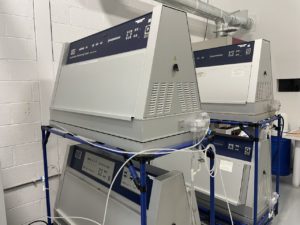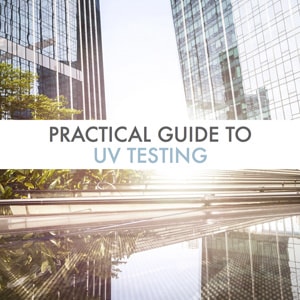ASTM D6625
Standard Practice for Conducting a Test of Protective Properties of Polish Applied to a Painted Panel Using Fluorescent UV-Condensation Light- and Water-Exposure Apparatus
Micom offers ASTM D6625 testing as part of its UV testing services. ASTM D6625—Conducting a test of protective properties of polish applied to a painted panel using fluorescent UV-condensation light—and water—exposure apparatus—describe the procedure required for the evaluation of the protective behavior of polish film through the utilization of UV exposure, heat and moisture. Unlike the ASTM G155 and the ISO 4892-4 practices whose illuminating sources are respectively Xenon and Carbon arcs, this test protocol relies on the use of fluorescent UV light. Hence, this method is founded on the principles of the ASTM G154 standard.
Evaluation of the polish behavior through accelerated weathering—use and factor to consider:

The main factor that has to be considered when running this test is: the amount of polish used on the sample.
Typical experimental parameters for ASTM D6625:
The number and the size of the specimens have to be specified. The specifications of the test are listed in table 1.
Table I: Typical test parameters
| Parameters | Specifications |
| Polish application conditions | Temperature between 21 and 27°C |
| Relative humidity between 20 and 80% | |
| Irradiance level | Has to be specified |
| Exposure cycle | Condensation period of 4h at 50 °C (no light) |
| 5h of UV exposure at 70 °C (no moisture) |
Other test methods related to ASTM D6625:
For additional related test methods, please see coating testing, ASTM D523 , ISO 4892
If you have any questions about the ASTM D6625 test, we invite you to contact our material testing lab today. It will be our pleasure to answer your questions and help you with your custom material testing requirements.
Practical UV Testing Guide
Sunlight exposure can have harmful impacts on carbon-based
materials such as coatings, polymers, textiles, and many others.
Learn more about our in-laboratory UV testing process in this guide.


